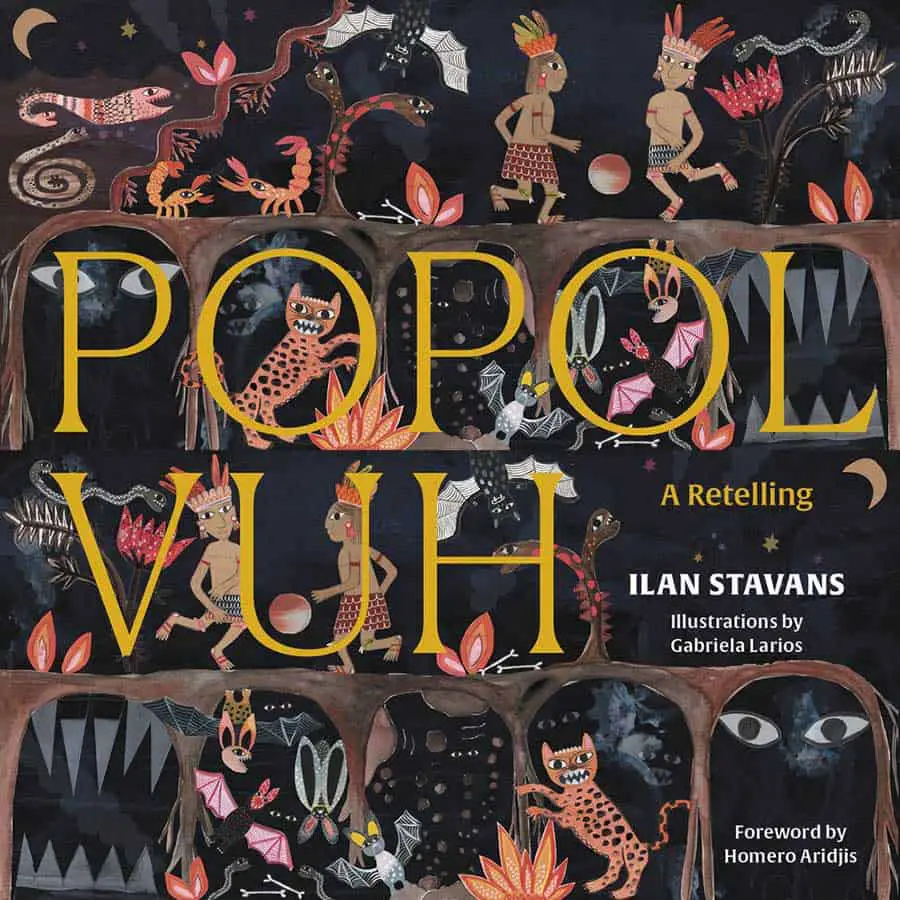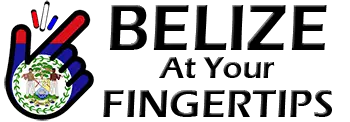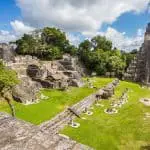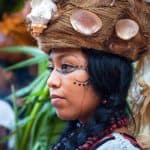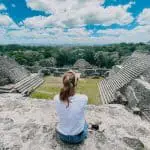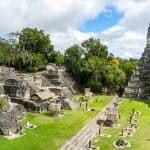Understanding the ancient Mayan civilization can be a complex task with their rich and deep-rooted culture.
One fascinating aspect of this culture is the Mayan creation story, known as the Popol Vuh; a mythical tale full of divine beings, cosmic battles, and key insights into Mayan ideology.
Read through an engaging exploration of this epic narrative, demystifying its layers and deciphering what it reveals about Mayan beliefs and origins. Let’s dive into the captivating universe of the Ancient Maya!
Key Takeaways
- The Popol Vuh is a special book that tells the Mayan creation story.
- In this story, the Heart of Sky and Plumed Serpent create the earth, mountains, sky, and eventually humans from corn.
- Hero Twins Hunahpu and Xbalanque beat death to help humans.
- Other cultures share some parts of this tale like a big flood event.
- This ancient story affects how Mayans live today. It shapes their art, buildings, and beliefs in gods.
- The Popol Vuh continues to be studied for new ideas about Mayans.
Overview of the Mayan Civilization
The Mayan civilization, an influential and advanced ancient society, was centered in the Yucatán Peninsula of Mexico between 250 CE to 900 CE. This time is known as the Classic Period.
Characterized by elaborate art, architecture, mathematical and astronomical systems, the Maya thrived in a hierarchical society under the rule of kings and nobles.
Their culture was deeply rooted in religion and mythology, much of which is preserved today through their written records like hieroglyphics inscribed on stone monuments.
The Popol Vuh represents a significant part of this cultural heritage as it details their unique creation myth.
The people told complex stories, like the Popol Vuh. This story was part of their oral tradition and was written in Mayan hieroglyphics.
It got translated into text much later. Their way of life and beliefs gave shape to these stories and art forms they made from them too!
Unique images from this book are often seen in their art work.
The Popul Vuh: The Mayan Origin Story
The Popul Vuh – a sacred Mayan text, narrates the captivating story of origins, documenting their conception of the world’s creation while becoming a profound source for understanding ancient Mayan culture.
Background of the Popul Vuh
People call the Popul Vuh the “council book”. It is a long and complex tale told by the Mayas.
For the first time, in the 16th century, people took this story from Mayan hieroglyphics and turned it into words we can read now.
Major themes and characters
The Mayan origin story, the Popul Vuh, is full of deep themes and vivid characters.
- Creation: The Heart of Sky and the Plumed Serpent work together to make life and earth. Before this, there was only a empty world of sky and sea.
- Nature: The Creators separate the mountains from water and create animals and birds of the mountains.
- Failure: The first try to make a human being from mud, however, this failed because they crumbled and disintegrated into the water.
- Grandfather Xpiyacoc and Grandmother Xmucane: These beings are called upon by Heart of Sky and Plumed Serpent to help create humans.
- Second attempt of making people failed: With the help of Grandfather and Grandmother, humans were created out of wooden carvings. This creation talked and multiplied, but there was nothing in their minds and hearts; they did not worship their creators.
- Humans made from corn: Humans are now successfully made when corn is used to make them. By creating them from corn, these humans were able to speak and worship their creators. The original goal of the Heart Sky and the Plumed Serpent.
Creation Myths in the Popul Vuh
The Popol Vuh recounts the fascinating legends of Mayan creation, detailing how the gods formed the Earth, conceived animals and plants, and ultimately created humans from corn.
It also introduces us to the epic saga of Hero Twins – Hunahpu and Xbalanque who defy death and bring about humanity’s salvation.
These tales reflect not only on our existence but give profound insights into ancient Mayan perceptions of life, divinity, and human’s place in the cosmos.
The Creation of the World
The Heart of Sky and the Plumed Serpent took the first step to make our world. There was just sky and sea, nothing else.
They had a great plan. First, they made animals like deer, pumas, jaguars and rattlesnakes.
These creatures became guardians of bushes along with birds who built nests in them.
But these makers wanted more than just animals – they craved voices that could sing their praises.
This marked the start of human life on Earth in Mayan believes.
The Creation of Humans
In the Mayan story, the Plumed Serpent and Heart of Sky made humans.
At first, their bodies were formed from mud. But this did not work well. The mud people could not speak or multiply.
They had no power or strength and soon broke apart. Then the makers tried wooden carvings to create humans. These wooden people could walk and talk but had no soul or memory of their creators, the Heart of Sky.
The wooden people multiplied but they mistreated animals and caused harm to nature.
This angered the Heart of Sky who sent a great flood for punishment to destroy them all except monkeys which are considered by Maya as their wood brothers because they come from wooden people.
Lastly, Grandfather Xpiyacoc and Grandmother Xmucane, two wise gods used their powers again to create people out from corn dough that was yellow and white in color which symbolizes Sun (Yellow) & Moon (White).
The corn peoples were able to think, understand, see clearly & respect their creators along with rest of everything around them including animals & trees showing gratitude towards each one’s existence.
This last successful attempt gave way for creating more human beings; allowing Mayans to transform into a complex civilization boosting growth in terms of culture & society recognizing themselves as “People made from corn dough”.
The Hero Twins
The Hero Twins are key in the Popol Vuh tale.
These twins, named Hunahpu and Xbalanque, come to life after a big flood. They use their wit and bravery to beat the Lords of Xibalba, rulers of the underworld.
Their win paves the way for better humans made from corn. Like in some other old stories such as the Bible or Epic of Gilgamesh, floods lead to fresh starts.
For the Mayans, this new start came through these heroic twins.
The Role of the Popul Vuh in Mayan Culture
The Popul Vuh, a sacred text, had immense importance in the Mayan culture, shaping their religious beliefs, influencing artistic expressions like pottery and murals, and guiding societal norms with its rich narratives.
Religious and Ritualistic Significance
The Popol Vuh is very important in Mayan culture. It is seen as their “council book” filled with sacred teachings. The story tells about the makers in the sea and sky who planned for life to begin.
This shows the Mayan belief that gods made the world.
The Popol Vuh also describes an empty world at first, showing how much they value creation and divine power in religion.
The makers brought earth to life by using words, showing that words and rituals are powerful in Mayan religious practices.
Influence on Art and Architecture
The Popol Vuh played a big part in Mayan art and building styles.
Many wall paintings show parts of the book’s stories. Artists made pictures of characters from the book. Builders used ideas from it too.
They put symbols on temples and other buildings that came from the book.
Colors, patterns, and designs also show how much they liked this famous storybook.
Impact on Societal Beliefs and Customs
The Popol Vuh shaped the way Mayans saw the world. They gave high value to the Plumed Serpent and Heart of Sky as world makers.
The story taught people about where humans came from.
It told them they were made of wood but could not remember their makers. This idea was important in how they saw themselves.
Nature had deep meaning for them because of these stories too.
People thought animals, like deer and birds, were close friends to humans because that’s what the story said.

Comparing the Mayan Creation Story with Other Cultures
We’ll delve into intriguing comparisons between the Mayan creation story and those from other cultures, revealing striking similarities and fascinating differences that highlight the uniqueness of the Mayans.
Discover how these ancient narratives intersected, clashed, or possibly influenced each other!
Similarities and Differences
The Mayan creation story shares fascinating similarities and differences with other, globally-known beliefs.
To better illustrate these parallels and contrasts, check out the table below.
| Cultural Myths | Similarities | Differences |
|---|---|---|
| Biblical Flood Story | Both narratives incorporate a flood story. This commonality may reflect the prevalence of flood myths in civilizations with agricultural bases. | In the Biblical account, Noah is given clear instructions by God to build an ark and save all species, while the Popol Vuh does not detail any specific survival plan. |
| Epic of Gilgamesh | Both stories have a flood as a key event. They also involve a form of divine intervention in the creation process. | In the Epic of Gilgamesh, the flood is sent as punishment by the gods, while in the Popol Vuh, it seems to be part of the creation process itself. |
| Evolution Theory | The inclusion of monkeys in the Popol Vuh narrative could be seen as hinting at a shared ancestry with humans, an idea central to the theory of evolution. | The theory of evolution is a scientific doctrine based on empirical evidence, whereas the Popol Vuh is a mythological narrative grounded in religious and cultural beliefs. |
Influence and Interactions
The Mayan creation story shares ties with other tales. One clear link is the flood part of their story and the Bible’s tale.
Some people think this idea came from the Epic of Gilgamesh, which also has a big flood in it.
The use of monkeys suggests two things. First, they may be hinting at how creatures change over time, like what science says about evolution now.
Second, they might show how the Mayans changed from hunting to farming.
Mayan stories didn’t just stay in their land; they moved around too! When traders came to visit or when there were wars, people got to know these stories.
That helped spread their ideas to places far away and left an impact on different cultures as well.
Modern Interpretations of the Mayan Creation Story
Delve into the intriguing modern perspectives of the Mayan creation story, exploring diverse academic theories and surprising pop culture references.
Let’s uncover how ancient wisdom intertwines with contemporary thought in this fascinating exploration!
Academic Studies and Theories
Books on the Mayan Origin Story open up new worlds. Here are some ideas from smart people:
- The Popol Vuh is a long and complex story that has been the subject of academic studies and theories.
- These people found out that the story was first written into alphabetic text in the 16th century. Before this, it used to be told with pictures called Mayan hieroglyphics.
- Scholars have looked into the origins and myths of the Mayans by interpreting the Mayan Creation Story.
- Because of the common big flood in the Popol Vuh and the Bible; it could be that they shared cultural influences or mythological themes.
- Researchers are studying the symbolism and meaning behind the makers in the sky and the sea to understand their significance within the Mayan belief system.
- Academic theories have been proposed to explain the portrayal of various animals in the story, such as the deer, pumas, jaguars, rattlesnakes, and guardians of the bushes, potentially reflecting the Mayans’ relationship with the natural world.
- By studying the Mayan Creation story, Scholars have produced a better understanding of Mayan beliefs, rituals, and worldview.
Pop culture references
Pop culture shows us many ways the Mayan creation story appears. Let’s take a look at some of them:
- The Hero Twins in the myth have inspired characters in video games like “Shadowrun.”
- The movie “Apocalypto,” directed by Mel Gibson, draws from the myths and culture of the ancient Maya.
- TV shows like “Ancient Aliens” discuss theories about Mayan history and myths, including their creation story.
- In Diego Rivera’s murals, the artist paints scenes from Popol Vuh.
- Books and comics often refer to Mayan myths as well. Examples include Neil Gaiman’s comic book series, “The Sandman.”
- Movies like “2012” used predictions tied to the Mayan calendar as a plot point.
What is the significance of the Mayan Creation Story in Mayan culture today?
The Mayan Creation Story holds great significance in the Mayan cultural immersion experience today. It serves as a guiding narrative that shapes their beliefs, traditions, and way of life. Understanding this ancient tale is essential for anyone seeking to truly comprehend and appreciate the depth of Mayan culture.
Conclusion
The Mayan Creation Story holds proof of ancient thought.
It tells us about the Earth, people, and gods. This story is a gift from the old times.
It helps us to know more about Mayan life and faiths.
FAQs
1. What is the Mayan creation story?
The Mayan creation story, written in the “Mayan Book of the Dawn of Life”, tells about how gods, animals and humans were made.
2. Who translated the Mayan creation story into English?
Francisco Ximénez first wrote it down, and later Dennis Tedlock created an English version.
3. How does this tale describe life’s start according to Maya?
It explains that makers in the sky shaped a body from mud which became humans after many tries.
4. Do we get information on how Maya people lived from this story?
Yes! It shows us about Mayan social ethics, their belief system or cosmology, powers or deities they worshiped like Hunahpu and Xbalanque, and their agricultural way of living.
5. Why is this old story still important today?
Because it still influences modern Maya living today; also scholars can learn about Ancient Maya culture before Spanish invasion by studying it.
6. Where can I learn more about the Mayan Creation story?
If you’re interested in learning more, we recommended the following book that can be found here => Popol Vuh: A Retelling
